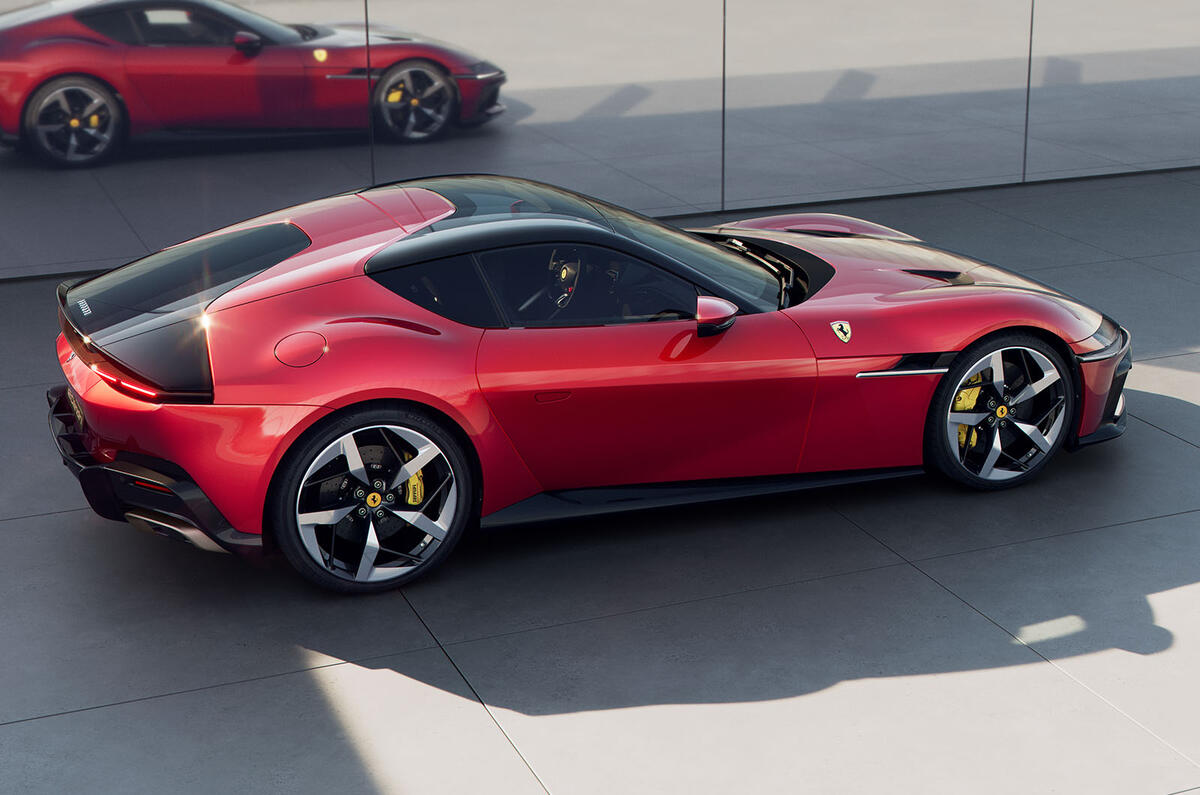The new Ferrari 12Cilindri will cost from £336,500 in the UK - making it one of the firm's most expensive series production cars yet.
That's the base price for Ferrari's new V12-engined flagship, but being liberal with the extensive options list would nudge the list price well clear of £400,000.
The open-roof 12Cilindri Spider, for example, adds another £30,000 to take the list price to £366,500 - making it one of the most expensive convertibles in production.
Then you can choose the colour of the brake callipers for £1512, tint the rear windows for £3079 and add ventilated, massaging front seats for £8957.
Various pieces of interior and exterior trim can be swapped for carbonfibre alternatives, too, including the air filter box (£3583), the rear boot trim (£2800), the mirrors (£3359) and the inner door panels (£5039).
Meanwhile, adding the Personalisation Pack – which allows the owner to specify bespoke colours and materials for various surfaces inside and out – costs £14,074.
Choosing your own special exterior colour on demand will add £39,624 - the most expensive option.
Ferrari will provide the 12Cilindri with a four-year warranty in the UK, compared with three years in other global markets, and will carry out all routine servicing for the first seven years of the car's life.
The first cars will launch in Europe in the coming weeks, before UK owners start taking delivery early next year.
Since the 12Cilindri was revealed, Aston Martin has revealed a direct contender in the form of the new Vanquish, which succeeds the DBS with an 824bhp V12 powering the rear wheels and performance figures broadly in line with its Italian rival.
The primary technical difference between the two cars is that the Aston's V12 is twin-turbocharged while the Ferrari's V12 continues to breathe freely - but with 819bhp, it's still the most powerful pure-ICE car the Italian firm has yet put into series production.
Revealed on the sidelines of the Miami Grand Prix earlier this year to commemorate Ferrari’s 70th anniversary in the US, the 12Cilindri “opens a new chapter in Ferrari history”, according to the brand’s chief marketing and commercial officer, Enrico Galliera.
Taking up the mantle from the 812 Superfast, the 12Cilindri ramps up the power, adopts a bold new styling language and introduces a raft of important new technologies. But, crucially, it sticks with Ferrari’s 6.5-litre naturally aspirated V12 after the Maranello firm invested heavily in making its biggest engine compliant with new emissions regulations in order to cater to continued demand.













































Join the debate
Add your comment
So, we're all having our say about this car, but, if we were in the position of the few who can afford cars like this and have five berth Garage for the others, would you swap your life for theirs?
Even if I could I wouldn't as I hate being ripped off, whether it's £8 or £8,000! They are charging 3 to 10 times the price for extras even compared to a Porsche options list (and anyone who reads Autocar knows the underlying suppliers and tech are the same! Eg massage seats are standard on higher end Kia's, £1,800 on a Porsche or £9,000 on this Ferrari!). Sadly this no longer appeals to me as a car fan, even though I'd love that V12.